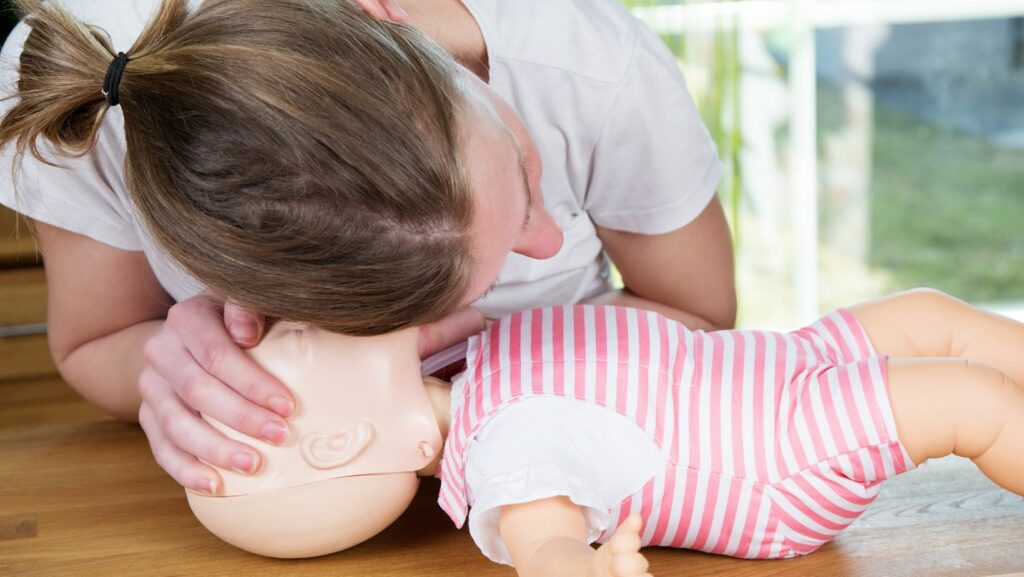giver, or even a bystander, it’s crucial to know what steps to take in order to ensure the child’s safety and well-being. In this article, I’ll guide you through the necessary actions to take when confronted with an unresponsive child, providing you with the knowledge and confidence to handle such a situation effectively. From assessing the child’s responsiveness to initiating life-saving measures, we’ll cover the essential steps you need to know. So, let’s dive in and equip ourselves with the tools to respond swiftly and appropriately when a child is unresponsive.
In an emergency situation, it’s natural to feel overwhelmed and unsure of what to do. However, having a clear plan in mind can make all the difference. In this article, I’ll walk you through the crucial steps to take when faced with an unresponsive child. From assessing the child’s breathing and pulse to initiating CPR if necessary, we’ll cover the essential actions that can potentially save a child’s life. By understanding and implementing these steps, you’ll be better prepared to handle emergencies and provide immediate help when it matters most. So, let’s get started and empower ourselves with the knowledge to confidently respond to an unresponsive child.
The Child Is Unresponsive What Is Your Next Step
When faced with an unresponsive child, it’s important to act quickly and assess their responsiveness in order to determine the next steps. Here are the key actions to take:
- Approach the Child: Carefully approach the child and gently tap or shake their shoulder to see if they respond. Speak loudly and ask if they’re okay. Observe their facial expressions and body movements for any signs of response.
- Check for Breathing: If there is no response, it’s crucial to check if the child is breathing. Look, listen, and feel for any signs of normal breathing. Watch for chest movements, listen for breath sounds, and feel for air against your cheek. If the child is not breathing, it’s important to initiate CPR immediately.
- Check for Pulse: Along with checking for breathing, it’s also important to check for a pulse. Locate the carotid artery on the side of the child’s neck and gently press with your fingers to feel for a pulse. If there is no pulse, it’s necessary to begin CPR immediately.
Remember, every second counts when a child is unresponsive. Assessing their responsiveness is the crucial first step to determine the appropriate course of action. By following these steps, you’ll be able to quickly assess the child’s condition and provide the necessary care.

Calling for Emergency Assistance
When faced with an unresponsive child, it’s crucial to act quickly and seek emergency assistance. Calling for professional help is a vital step in ensuring the child receives the necessary medical attention. Here’s what you need to do:
1. Assess the situation: Before making the call, take a moment to evaluate the child’s condition. Determine if they are breathing or have a pulse. This information will be useful when relaying details to the emergency operator.
2. Dial emergency services: Grab your phone and dial the emergency number in your country. In the United States, the number is 911. Stay calm while speaking to the operator and provide accurate information about the child’s condition.
3. Provide important details: During the call, be ready to share critical details about the child’s age, any known medical conditions or allergies, and any signs of life or lack thereof. This information will assist the emergency responders in providing appropriate medical care.
4. Follow the operator’s instructions: The emergency operator will give you instructions on what to do while help is on the way. Listen carefully and follow their guidance. They may instruct you in performing chest compressions, rescue breaths, or any other life-saving measures.
5. Stay on the line: It’s crucial to stay on the line with the operator until help arrives. They can provide you with additional guidance or reassurance during this stressful time.
Calling for emergency assistance is a crucial step to ensure the well-being of an unresponsive child. By swiftly contacting professional help and providing accurate information, you play a critical role in getting the child the medical attention they need. Remember, acting quickly can potentially save a life.
Now let’s move on to the next necessary step in responding to an unresponsive child – initiating CPR.
Conclusion
In the face of an unresponsive child, it is crucial to act quickly and confidently to provide the necessary care and potentially save a life. This article has emphasized the importance of assessing the child’s responsiveness as the first step. By approaching the child, checking for a response, assessing breathing, and checking for a pulse, you can determine the appropriate course of action.
The article has provided step-by-step guidance on initiating CPR in an unresponsive child. It is important to assess the situation, position yourself correctly, locate the correct hand position for chest compressions, perform chest compressions and rescue breaths, and continue cycles of compressions and breaths until help arrives or signs of life appear.
Additionally, the article has highlighted the importance of calling for emergency assistance effectively. By promptly contacting emergency services, you can ensure that professional help arrives as soon as possible.
Remember, acting quickly and confidently in these situations is crucial. By following the steps outlined in this article, you can provide the necessary care and potentially make a life-saving difference.


More Stories
Understanding Tax Implications for Remote Workers
Expressing Love Through Words: Happy Birthday Nephew Quote
Boost Your Relationship with Good Morning I Love You Images